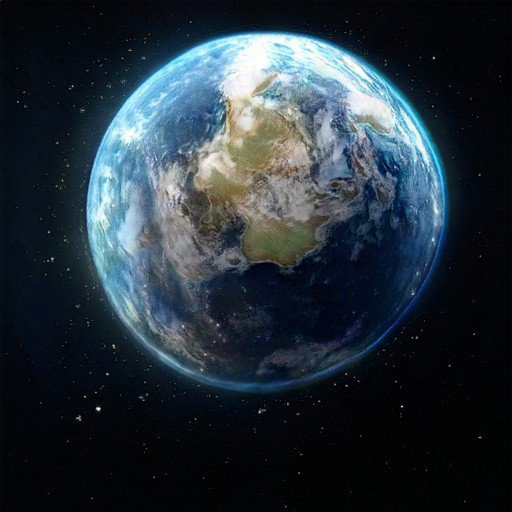Arcadia (ɑːˈkeɪdɪə)
The Empire's Lost Colony
Arcadia is the second planet from its star, Arcas, and lies in the middle region of its habitable zone. It is the only planet suitable for habitation by humans and Vasgarth in the system, classed according to Earth Empire Interstellar Exploratory Division (EEIED) records as a Tier 1 garden world of significant scientific and colonisation interest during the early 25th century. It has two orbiting satellites, the moons Pan and Themis, both of which contribute to the strong tidal forces of Arcadia's oceans due to their size and proximity to the planet. Arcadia is noted for its dazzling biodiversity that is on par, if not greater than, Earth's own. Much of the world is covered in old-growth forests and still retains expansive polar ice caps that form precarious land-bridges with the larger continents. It was first settled by an Earth Empire research expedition team in 2445, with colonies steadily growing over the years as more organisations staked claims on the world. Following what is known as 'The Collapse' at the start of the Mazerite Wars in 2455, the people left on Arcadia lost contact with the Earth Empire and access to space travel outside of the system, effectively cutting off the planet from the rest of civilisation. This has remained the case for the past 200 years, and it is assumed by the current human and Vasgarth inhabitants that the planet's location has been lost to any outside forces.
Geography
New Lakonia
The largest continent of Arcadia, New Lakonia was the first focus point of colonisation efforts due to its broad range of habitats and an abundance of clear, flat land suitable for construction (most notably, the plains central to the continent). It is easily the most diverse of the planet's landmasses, accounting for over half of the planet's biodiversity thanks in no small part to the Anapteros Forest in the north and the semi-arid river deltas and sub-tropical rainforests of the south. Besides the central plains, the rest of the continent is either hilly or mountainous, with the Diodenas Mountains and Trotonas Mountains being the largest ranges to the north and south respectively.
New Messenia
New Arcadia & Maina
Devonia & The New Attican Isles
The Cycladian Chain
Polar Caps & The Southern Cap Peninsula
The Great Aegean Ocean
History
The complete timeline of Arcadia's settled history is here: History of Arcadia.
Discovery and Surveying
Arcadia (or Arcas-II, as it was known upon discovery), was discovered by the EES Hudson, an exploratory vessel of the Earth Empire Interstellar Exploratory Division (EEIED) that was assigned the mission of exploring the rimward boundary of the Agamemnon Rim, a large sector of star clusters beyond the edge of Empire space, and placing navigation and communications buoys for future traversal. They entered the Arcas system on 9th July 2437, initiating a first scan of the G-class star and its five orbiting planets. Arcas-II was immediately flagged by the Hudson's probing systems as a planet of interest due to its position in the middle of the star's habitable zone and the apparent presence of liquid water on its surface. The Hudson initiated a closer scan of the planet and took the first iconic picture (displayed at the top-right of this article), that shows the surface of Arcas-II more closely. It was determined that the planet contained a nitrogen-oxygen rich atmosphere with the possibility of Earth-like gravity, and so the Hudson classified Arcas-II as a Tier 1 garden world of significant scientific and colonisation interest, with the results of the initial scans beamed back to Earth via FTLCBs the same day. Over the next few months, plans were drawn up and approved by EEIED and EESI (Earth Empire Scientific Institution) for the installation of an orbital research station over Arcas-II, and construction began on ORS-725/52 'Lucky' on 23rd April 2438, with the completion of construction on 2nd February 2439. Over this time, parts of the station had been brought online as they were completed to allow crew and research teams to move in and commence work right away on surveying the planet. At the station's height, 150 crew members were present onboard. Only three months after Lucky's completion, the research teams sent down the first drones to Arcas-II's surface, with most of them being concentrated around the largest continent (later known as New Lakonia) due to its earmarking as a potential future colonisation site, and the other drones spread out to the other continents (New Messenia, New Arcadia, Maina, and Devonia) and islands (especially what came to be known as the Cycladian Chain and New Attican Isles).First Colonies
The Collapse
Time of Chaos
Post-Collapse Expansion
| Arcadia |
|---|
|
According to the databanks, this image of Arcadia was taken on 9th July 2437 by the exploratory ship EES Hudson during initial charting of the Arcas system. It shows the smallest continent of the planet, later named 'Devonia', and some of its surrounding islands. |
| Orbital Characteristics
Natural Satellites:
Surface pressure: 102.135 kPa (at MSL)
Composition by volume:
Surface Climate Highest Recorded Temperature: 57 °C (134.6 °F) Lowest Recorded Temperature: -81 °C (-113.8 °F) |
Alternative Name(s)
Arcas-II (pre-colonisation)
Type
Planet
Included Locations
Remove these ads. Join the Worldbuilders Guild










Comments